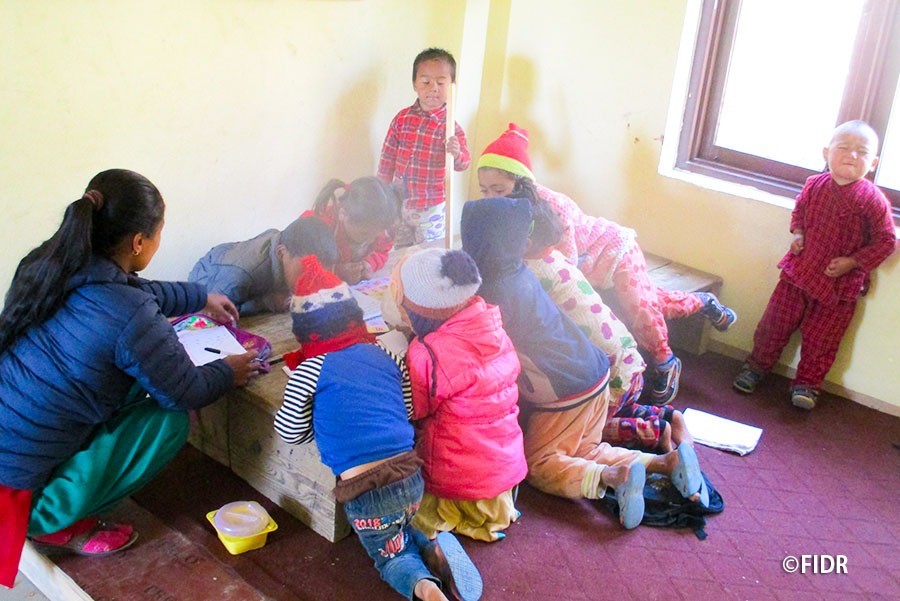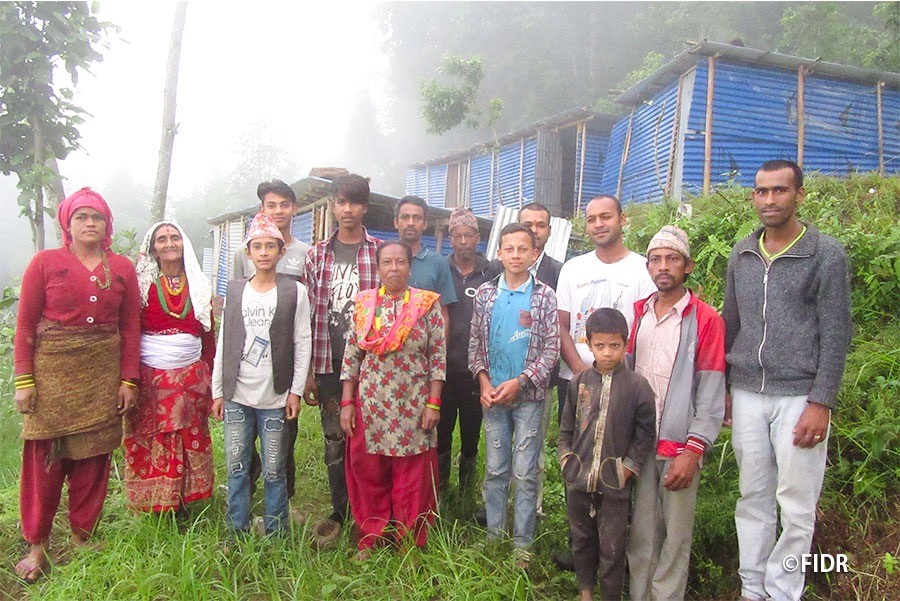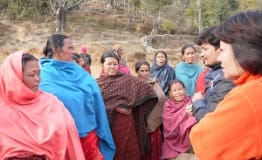Issues the Project Tackles
A number of school buildings were destroyed by the massive earthquake hit the central Nepal in 2015. While it is an urgent need to construct new school buildings with sufficient strength against another earthquake in the future, many of them are waiting to have their facilities replaced.
The children are still studying in the temporary plain classrooms. Some schools do not have toilets, even though others have a few; the number of the toilet facilities is not enough for all children. This is stressful physically and mentally?especially for the girls. Sanitation and hygiene condition of the area around these schools is also deteriorating.
Background of the Issues
The following are the three reasons for the delay of safe school buildings construction in Nepal.

First of all, Nepal is a rugged mountainous country. It is far more difficult to transport building material along the narrow unpaved mountain roads comparing to flat road. It gets even tougher in rainy season, as landslides often occur in intermountain area. To build up safe quakeproof buildings, it is essential to employ reinforced concrete structure. That means it is necessary to bring heavy material such as cement, bricks and steel from the outside of the village. If the village is located in the mountain area and farther from the town, construction work gets even harder.

The second reason is long period of political unstableness and the financial weakness of this country. Country’s tax revenue is not enough to cover the cost of reconstructing school buildings; therefore, local communities have to raise contribution from the public or fund-raise from the foreign countries through the government. In those cases, to build the classroom is likely to be considered as the first priority while the toilet facility often comes after.

Lastly, they have limitations in the technical aspect. In the mountain area, there are few construction workers who have rich experience to raise the reinforced concrete building. Also most of the supervisors at construction site are in the urban area. Even the architectural drawings are perfect for the earthquake-proof characteristics, if the workmanship is not enough, it would come to nothing.

Under these circumstances, FIDR had finished construction buildings for six schools so far. Now, the local communities and the government in Ramechhap and Dhading districts determined which school needs help for their classrooms and toilet urgently, and they requested us to help.

Project Purpose
To improve the school environment and create self-sustaining system by the local community
Project Detail
Project site
Gokulganga RM, Ramechhap
Nilakantha M, Dhading
Beneficiaries
- 20,000 local resident, in Gokulganga RM, Ramechhap
- 60,000 local resident, Nilakantha M, Dhading
Main Activities
To build two school buildings and toilet in Ramechhap
To build toilet facility for three schools in Dhading
- Setting up the meeting by the local people’s initiative for planning and operating the project
- Constructing the school buildings (for two schools)
・Shiva Basic School
・Siddajyoti Harimishra Basic School
Note: Both schools have the pre-school students up until the students at the age of year eight, in total nine years. - Building the school toilet facility (for five schools)
- Running workshop for facility management and cleaning schools and training teachers
- Monitoring the community
Project Period
August 2017 - September 2020
Our Approach
School has important roles for the local people. Needless to say it is a place for children to study and they are the bearers of this country's future. Also schools can be the hub of regional activities.
We will forward our project maximizing the initiative of local community from the phase of planning to the maintaining and management after the completion of school.
Activity Reports
-
School Improvement Project

2020.10.26
One year after the completion of new school buildings
Nepal Education International Cooperation for Social Development -
School Improvement Project

2020.10.07
Landslide Victims Built Temporary Shelters in Ramechhap
Nepal Agriculture International Cooperation for Social Development -
School Improvement Project

2020.08.14
School under COVID-19 Pandemic at Project Sites
Nepal Education International Cooperation for Social Development -
School Improvement Project

2020.08.07
Monsoon Emergency Relief in Nepal
Nepal Agriculture International Cooperation for Social Development
DONATION
Your generous donation now will have impacts
on children and communities in our fields.


















